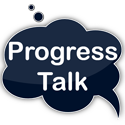Search results
-

Bad Queries
Downloaded and trying to find time to play around with it :-)- TheMadDBA
- Post #19
- Forum: Development
-

Bizarre Temp-table Name Resolution
I also cannot reproduce this.. even tried making some of tables hidden to see if that was part of the issue.- TheMadDBA
- Post #14
- Forum: Development
-

Question Timeout On Update
Newsflash: Tom Bascom encourages developers to use deprecated language functions, says work tables are better than temp tables. Film at 11.- TheMadDBA
- Post #14
- Forum: Development
-

Bad Queries
That is very true Greg. Especially important to catch as many as you can during development and testing. James. There is a new release of SessionTrace that supports conditionally turning on tracing based on a config file with options for filtering by user and program and only output a file...- TheMadDBA
- Post #11
- Forum: Development
-

Api Calls In Progress
https://community.progress.com/community_groups/openedge_general/w/openedgegeneral/1792.9-1e-language-reference.aspx- TheMadDBA
- Post #11
- Forum: Development
-

Api Calls In Progress
Depending on the returned content you can use INPUT THROUGH and IMPORT UNFORMATTED to read each line. Assuming it is all text with carriage returns and line feeds.- TheMadDBA
- Post #9
- Forum: Development
-

Bad Queries
More coffee consumed.... a little more awake now ;-) The evils of NE and NOT in where clauses. For some reason people expect a NOT or NE on a logical (or other types) to use an index. Matches in the where clause... no index will be used regardless of the pattern. This is different from a LIKE...- TheMadDBA
- Post #7
- Forum: Development
-

Resolved .net Openclient
The clean copies will be under your OE install directory.. %DLC%/dotnet/deploy strongnamed-signed - strongly named and signed DLLs signed - just signed strongnamed - really low security- TheMadDBA
- Post #10
- Forum: Development
-

Question How Are You Publishing Your Changes To Live Environment?
RoundTable is the best OpenEdge source code control system out there. It will handle pretty much everything you would expect and probably some things you don't know you need yet. As far as the actual deployment goes... for server side code I am a fan of tar files for Unix systems and zip files...- TheMadDBA
- Post #3
- Forum: Development
-

Bad Queries
Sorry in advance for the long post.. and probably the next one after some more coffee Yes... a section on USE-INDEX is a must. I assume when you say functions on the right you mean functions that refer back to the table and not just functions in general? Here is one of my favorites (thanks...- TheMadDBA
- Post #4
- Forum: Development
-

Answered Where To Download The Eula ( End User License Agreement )
You don't have an OpenEdge_EULA.rtf in your DLC directory? -

Resolved .net Openclient
Did you put the DLLs into the Global Assembly Cache or just into the project? Do you have some smallish sample code you can upload or post?- TheMadDBA
- Post #8
- Forum: Development
-

Question How To Define Function With Optional Parameter?
Well they do exist in the class based (ooabl). Not sure why you don't want to use oo for overloads. Works very well in my opinion.- TheMadDBA
- Post #11
- Forum: Development
-

Bizarre Temp-table Name Resolution
Hmmm. I can't seem to reproduce that on 10.2b08. Is it picking the first table that starts with t?- TheMadDBA
- Post #8
- Forum: Development
-

Bizarre Temp-table Name Resolution
"t" isn't special like Rob says... it is the abbreviation being unambiguous that causes that behavior. Abbreviations are one of my Progress pet peeves... along with unqualified column names for tables and temp-tables. Neither of them make sense and should have never been supported imo.- TheMadDBA
- Post #5
- Forum: Development
-

Managing Fonts
You did make a backup of the schema holder first or try this with a test copy right?? Please post the full environment settings for the process and script that are trying to start the dataserver broker... as well as complete OS version and 10.2B service pack.- TheMadDBA
- Post #12
- Forum: Development
-

Question Timeout On Update
But remember how cool they were when they first came out? Also using put screen and overlay frames to make menu bars and three-d popups :-)- TheMadDBA
- Post #9
- Forum: Development
-

Question How To Avoid Non-printable Chars During Write-xml
Then you will either have to use the solution suggested by KrisM or some variation of that (replacing the CHR values in the temp-table/dataset before the WRITE-XML). And you will have to do that in every program that exports the data.- TheMadDBA
- Post #9
- Forum: Development
-

Question How To Avoid Non-printable Chars During Write-xml
First... Use REPLACE to get rid of the values from the editor or fill in before saving to the database. Then use REPLACE to get rid of the values that already exist in the database.- TheMadDBA
- Post #7
- Forum: Development
-

Question How To Avoid Non-printable Chars During Write-xml
To me the question is why do you have those non printable characters in your database? If they are garbage then they need to be cleaned up. If they serve some kind of purpose like storing delimited values then they need to be handled differently (and then slap some developers around for doing it).- TheMadDBA
- Post #4
- Forum: Development
